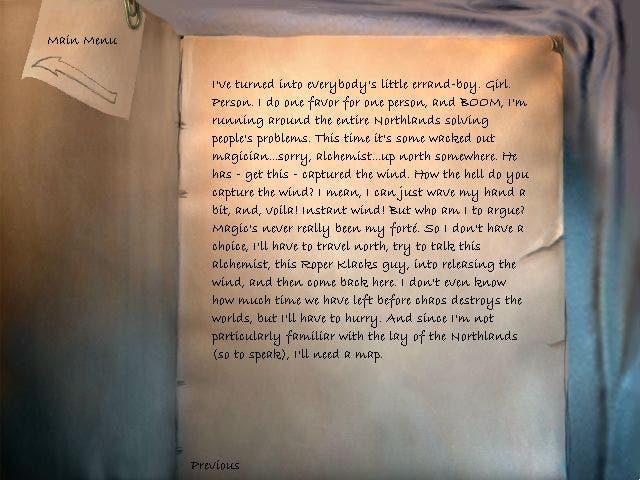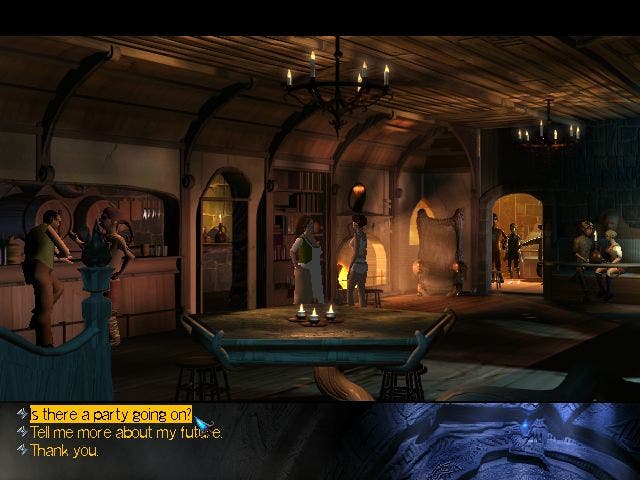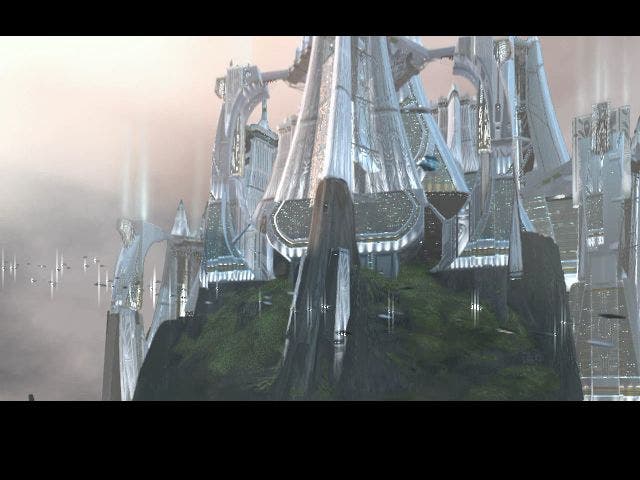The Longest Journey
3D adventure game reviewed

Saving April Ryan
Every now and then a game comes along that sucks you into its world so completely that you vanish into it for days at a time, surfacing only for food and sleep when you just physically can't play any longer. Last year we had Outcast to rob us of sleep and social life, and this year we have The Longest Journey.
Produced somewhere in the depths of Scandinavia, and only reaching our God forsaken shores some months after it had been released across most of the rest of Europe, The Longest Journey is quite simply one of the slickest and most involving adventure games I've ever had the joy of playing.
You take on the role of April Ryan, an art student in 23rd century America who finds herself caught up in an epic struggle of good and evil that spans two worlds - her own scientific world of Stark, and the magical realm of Arcadia.
April has the ability to "shift" between these two worlds, and before long you find yourself travelling backwards and forwards between them as you try to solve the puzzle of who and what you are, while at the same time trying to save the world from imminent destruction at the hands of a pseudo-religious group known as the Vanguard.
The plot is told through a mixture of in-game conversations and beautiful rendered cinematics that are amongst the best I've seen. Although at times the info-dumping can get a bit much, and the conversations are occasionally a little long winded, the strong characters and excellent story drag you on through the game's four CDs.

Sound And Vision
The first thing to strike you on starting the game is just how beautiful it is. The pre-rendered backdrops are simply stunning, ranging from the city-scape and slums of Stark to the forests, islands and medieval cities of Arcadia.
In total there are over 150 locations to explore, and 50 characters to speak to, from cops and engineers to talking birds and eccentric alchemists. The characters are real-time 3D models, and most of them are nicely detailed and well animated.
Unfortunately the game is locked into a low resolution of just 640x480, which can make the characters look rather blocky at times against the stunning backgrounds, and causes some nasty "jaggies". If you have a Voodoo 5 or GeForce 2 graphics card you are in for a treat though - full-scene anti-aliasing really does give this game a whole new lease of life.
The sound is equally good, with some excellent voice acting and atmospheric music that suits the game and its mood perfectly. The script manages to keep you involved in the game and its characters, as well as injecting a welcome dose of humour, although some people may find the frequent swearing from some of the characters a little over the top. Make no mistake, this is not a kid's game...

Elementary
Of course, one of the most important elements of any good adventure game is its puzzles, and luckily The Longest Journey scores well here as well.
The puzzles are fairly challenging at times, but most of them are logical enough if you stop to think things through. There are a few bizarre puzzles which had me scrambling for the walkthrough though, and it's not always entirely obvious what you should be doing.
Luckily the game includes April's Diary, which is invaluable when you get stuck. This includes entries about many of the key events that take place during the game, which give you a further insight into April's character and, on a more practical level, can often give you a pointer as to what to do next.
You also have access to a log of all her conversations throughout the game, and trawling through the transcripts of her recent conversations sometimes turns up clues that you missed when listening to them the first time round.

Interfacing
Controlling the game is achieved with your mouse, using a very simple left and right click interface that allows you to move around, examine or pick-up items, talk to characters, and combine items in your inventory, all within a couple of mouse clicks.
Talking to another character brings up a series of options at the bottom of your screen, although as with most adventure games, at the end of the day you usually end up going through most or all of the options anyway in one order or another.
You can also access April's Diary by moving the mouse to the top of the screen and clicking on the little diary icon that appears. This gives you access to save and load game options, game settings, conversation logs, and the diary itself of course.
It's all very intuitive and easy to use, and is very unobtrusive, leaving you to concentrate on April and the world she is exploring.

Conclusion
The Longest Journey is not without its flaws. The humour may not appeal to everyone, the conversations can be rather long and meandering at times, and the labyrinthine plot is occasionally hard to follow.
Also the 3D characters don't look as good as they should do because of the low resolution, and although the game still looks gorgeous and runs silky smooth even on my old RivaTNT, you will really need a graphics card with support for full-scene anti-aliasing to make the most of the game's visuals.
At the end of the day though, The Longest Journey is an engrossing and highly entertaining adventure game with characters that you can care about, an involving storyline to keep you hooked, and settings and characters that are both beautiful and bizarre. What more could you want from an adventure game?

